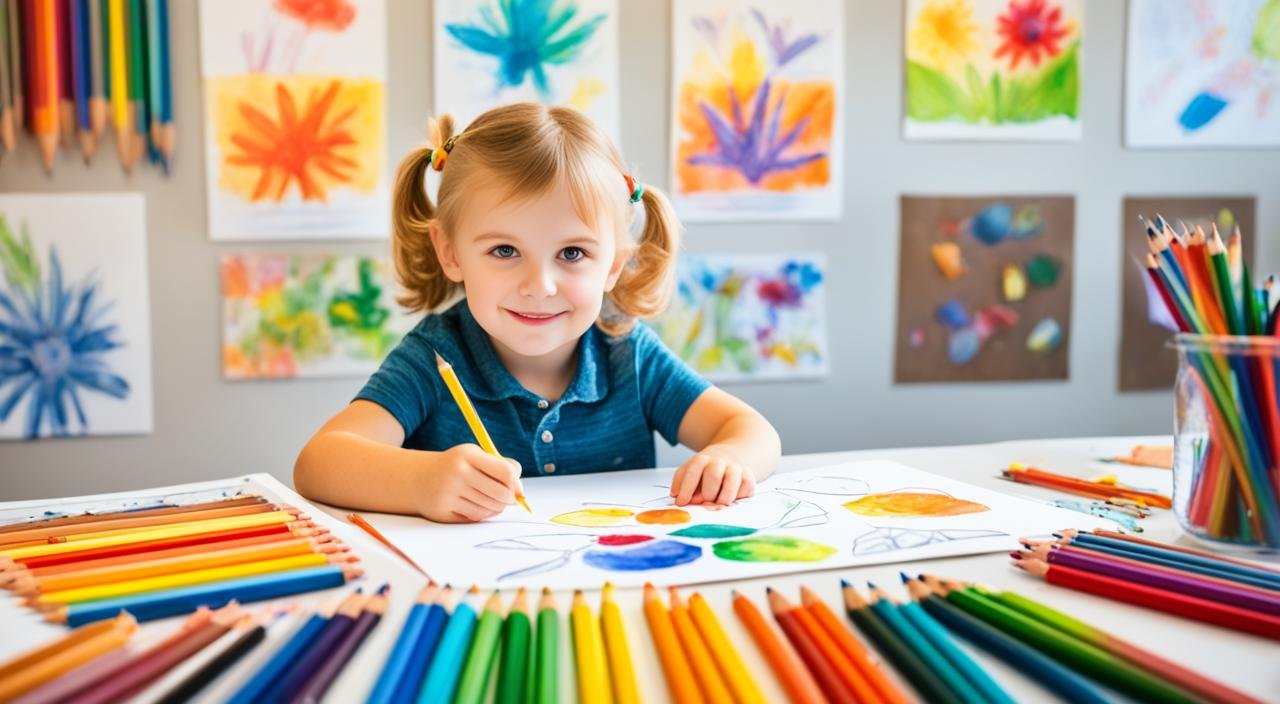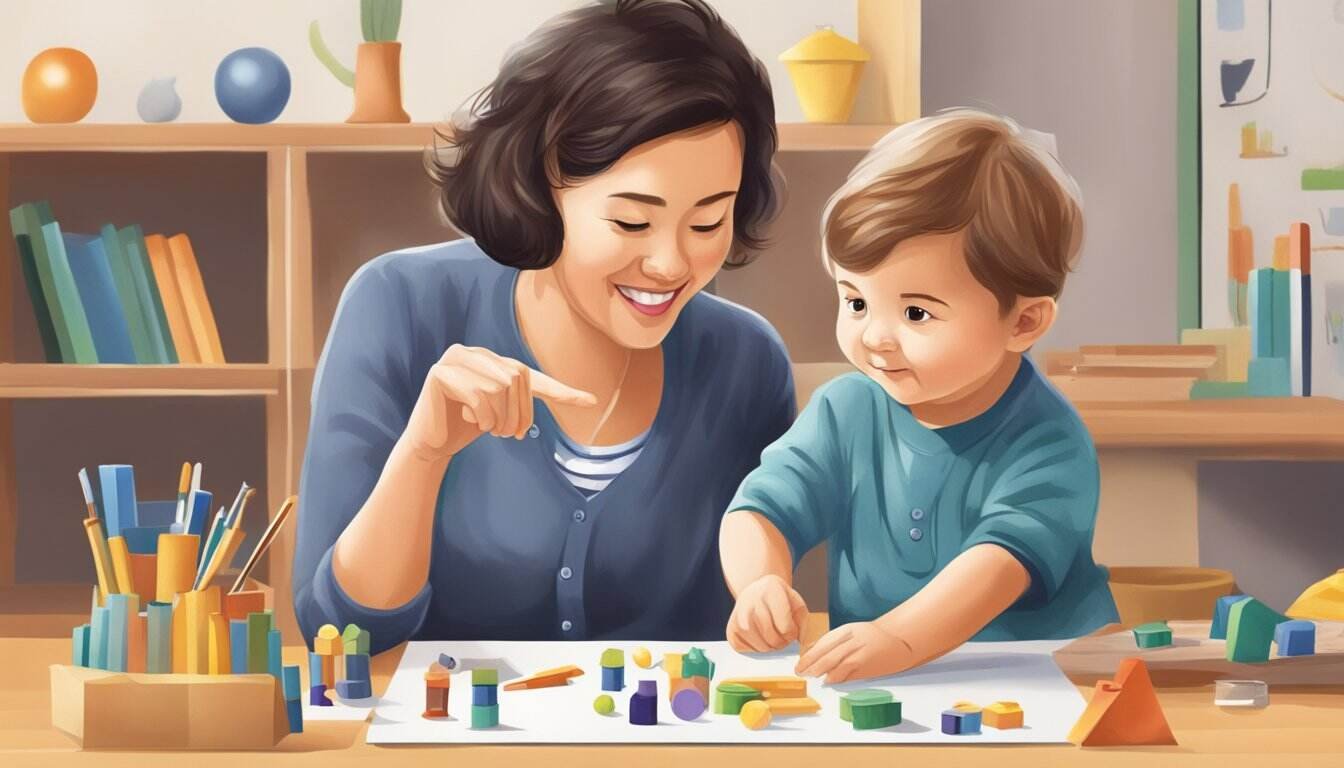Drawing is not only a fun and creative hobby for kids, but it also helps develop essential cognitive skills and hand-eye coordination. Children who learn to draw also develop problem-solving abilities and gain a means of self-expression and managing emotions. Encouraging children to explore their creativity and providing them with the necessary resources and guidance can help them discover their inner artists and cultivate a lifelong passion for art.
Meet Erin, a curious and imaginative 8-year-old girl. Erin has always had a fascination with colors and shapes. She spends hours drawing and sketching in her notebook, creating vibrant worlds and characters. Erin’s parents, knowing her love for art, wanted to encourage her passion and help her develop her artistic skills further.
Luckily, Erin’s parents discovered an online platform called TalentGum that offers child-friendly drawing lessons, step-by-step instructions, and art activities for kids. Excited about the opportunity to learn and grow as an artist, Erin eagerly enrolled in the program.
Under the guidance of talented instructors, Erin learned various beginner drawing tips and techniques. She experimented with different mediums like pencils, pastels, and markers, learning how to create depth, texture, and shading in her artwork. Step by step, Erin’s confidence grew, and her drawings became more intricate and detailed.
With each new drawing, Erin’s creativity soared. Through her art, she discovered new ways to express her thoughts and emotions, transforming blank pieces of paper into captivating stories.
Today, Erin is not only a skilled young artist but also a source of inspiration for other children. She shares her drawings with her friends, teachers, and family, spreading joy and sparking the imaginations of those around her.
By nurturing Erin’s love for drawing and providing her with the necessary tools and instruction, Erin’s parents have unlocked her creativity and helped her develop her artistic skills. Erin now dreams of a future where she can use her talent to make a positive impact on the world around her.
Key Takeaways:
- Teaching children to draw can help develop cognitive skills, hand-eye coordination, problem-solving abilities, and self-expression.
- Encouraging children to explore their creativity and providing guidance and resources can cultivate a lifelong passion for art.
- Online platforms like TalentGum offer child-friendly drawing lessons and step-by-step instructions for kids to learn and improve their drawing skills.
- Experimenting with different drawing techniques and mediums can help children develop their artistic abilities.
- Drawing provides children with a means of self-expression and storytelling, allowing them to share their unique perspectives and spark their imagination.
Easy Ways to Teach Pastel Drawings for Kids
Teaching children how to draw with pastels can be a fun and engaging activity. It not only allows them to explore their creativity but also helps develop their fine motor skills and artistic techniques. Here are some easy steps to introduce pastel drawing to kids:
1. Gather the necessary materials
To begin, gather the following materials:
- Paper
- Pencils
- Erasers
- Oil pastel colors
Having these materials prepared in advance will ensure a smooth and uninterrupted drawing session.
2. Choose a drawing topic
Let your child choose a topic for their pastel drawing. It could be their favorite animal, a beautiful landscape, or even a still life arrangement of objects. This allows them to have a personal connection to their artwork and stay engaged throughout the drawing process.
3. Start with a pencil sketch
Begin by sketching the fundamental forms and shapes of the chosen subject using a pencil. Encourage your child to take their time and pay attention to the proportions and details of the subject. This initial sketch will serve as a guideline for their pastel drawing.
4. Add details and colors with oil pastels
Once the pencil sketch is complete, it’s time to bring it to life with oil pastels. Encourage your child to experiment with different colors and shading techniques to add depth and texture to their drawing. They can blend colors, create gradients, or layer the pastels to achieve the desired effect.
5. Encourage creativity and experimentation
As your child works on their pastel drawing, remind them to be creative and have fun. Let them explore different techniques and encourage them to experiment with different strokes, blending methods, and layering colors. This will help them develop their own unique style and artistic expression.
Remember to display your child’s pastel drawings proudly and encourage them to continue practicing and exploring their artistic abilities. Motivate them to participate in art activities for kids, such as art classes or workshops, to further foster their creativity and develop their drawing techniques.
| Benefits of Teaching Pastel Drawings to Kids | How it Helps |
|---|---|
| 1. Fosters creativity | Allows children to express their imagination and develop their artistic skills. |
| 2. Enhances fine motor skills | Improves hand-eye coordination and control over small movements. |
| 3. Develops problem-solving abilities | Requires children to analyze shapes, colors, and compositions to create their drawings. |
| 4. Boosts self-confidence | Teaching children how to draw with pastels allows them to see their progress and gain confidence in their artistic abilities. |
How to Teach Pencil Drawings for Kids

When it comes to teaching children how to draw, pencil drawing is a versatile technique that allows them to explore their artistic skills. Whether they are just starting out or already have some drawing experience, pencil drawing offers a great opportunity for children to develop their creativity and attention to detail. Here are some tips on how to teach pencil drawings to kids:
- Start with simple shapes: Let children doodle and experiment with basic shapes like lines, triangles, and rectangles. This helps them develop their fine motor skills and gain confidence in their drawing abilities.
- Encourage observation: As children progress, encourage them to draw from observation. Provide them with reference photos or objects to draw and guide them on how to translate what they see into their drawings. This helps them improve their ability to capture details accurately.
- Focus on details: Emphasize the importance of paying attention to details in their drawings. Encourage children to observe the different textures, patterns, and proportions of the subjects they are drawing. This helps them develop a keen eye for detail and enhances their overall drawing skills.
- Promote regular practice: Like any skill, drawing requires practice to improve. Encourage children to make drawing a regular habit and dedicate time to practice. This helps them refine their techniques and develop a sense of discipline and commitment.
- Provide constructive feedback: When children share their drawings with you, provide constructive feedback that highlights their strengths and suggests areas for improvement. This helps them understand their progress and motivates them to continue learning and experimenting.
Creating a supportive environment where children feel comfortable making mistakes and expressing their ideas is crucial for fostering their creativity and developing their drawing techniques. Encourage them to explore their own style and to enjoy the process of drawing.
Remember, teaching pencil drawings to kids is not just about teaching them how to draw, but also about fostering their creativity and helping them develop valuable life skills.
How to Teach Kids to Draw Pokémon
Drawing Pokémon can be a fun and engaging way to teach kids how to draw. By combining their love for Pokémon with step-by-step drawing instructions, children can develop their artistic skills while creating their favorite characters. Here’s a simple guide to teaching kids how to draw Pokémon:
1. Choose a Pokémon
Start by helping children choose a Pokémon they want to draw. Whether it’s Pikachu, Charizard, or Bulbasaur, let them pick their favorite character. This will motivate them and make the drawing process more enjoyable.
2. Find Examples and References
Encourage children to find examples and references of the chosen Pokémon. They can search online or refer to Pokémon cards or books. Having visual references will help them understand the proportions, shapes, and details of the Pokémon they are drawing.
3. Start with Basic Shapes
Begin the drawing by breaking down the Pokémon into basic shapes. Use circles, ovals, squares, or rectangles to outline the head, body, limbs, and tail. This step helps children establish the overall structure and proportions of their drawing.
4. Add Specific Details
Once the basic shapes are in place, guide children in adding the specific details of the Pokémon. Teach them to observe the reference images and incorporate distinctive features like eyes, mouth, ears, wings, or scales. Emphasize the importance of attention to detail.
5. Discuss Color and Shading
Talk about different color palettes and shading techniques with children. Teach them how to choose appropriate colors for the Pokémon they are drawing and how shading can add depth and dimension to their artwork. Encourage them to experiment and make their drawings unique.
6. Be Creative and Have Fun
Throughout the drawing process, remind children to be creative and add their own personal touch to their Pokémon drawings. Whether it’s giving Pikachu a different expression or adding accessories to Charizard, fostering imagination is key. Encourage them to enjoy the process and be proud of their creations.
Remember, practice makes perfect! Encourage children to keep practicing their drawing skills and try different Pokémon characters. They can also explore online platforms like TalentGum for step-by-step drawing tutorials and interactive art activities. With patience, guidance, and a pinch of creativity, kids can become skilled Pokémon artists!
Conclusion
Teaching children how to draw is a valuable and rewarding endeavor. Not only does it encourage children to express themselves creatively, but it also plays a crucial role in the development of their cognitive abilities and problem-solving skills. By providing children with the necessary resources, guidance, and a supportive environment, we can help foster their creativity and unleash their artistic potential.
Art activities for kids, such as teaching pastel and pencil drawings or even drawing their favorite Pokémon, can be an exciting and engaging way to spark their imagination. Encouraging them to enjoy the process, experiment with different techniques, and express their unique artistic style is essential for their artistic growth and self-expression.
So, whether it’s finger painting, watercolor, or sketching, let’s empower our children to explore their creativity and develop their artistic skills. By nurturing their love for art and providing them with opportunities to express themselves visually, we are not only fostering their creativity but also encouraging them to think outside the box and approach challenges with an open mind. Together, let’s inspire the next generation of Picassos, Van Goghs, and O’Keeffes!
FAQ
How can I teach a child to draw with pastels?
To teach a child to draw with pastels, start by preparing the necessary materials such as paper, pencils, erasers, and oil pastel colors. Choose a topic for the drawing, such as a favorite animal or a landscape. Begin by sketching the fundamental forms with a pencil, then add details and colors using oil pastels. Encourage children to be creative and experiment with shading techniques to add depth and texture to their drawings.
What are some easy ways to teach pencil drawings for kids?
To teach pencil drawings to kids, allow them to doodle and experiment with simple shapes like lines, triangles, and rectangles. As they gain confidence, encourage them to draw from observation and use reference photos to create more detailed drawings. Emphasize paying attention to details and encourage regular practice to improve their drawing skills. Providing constructive feedback and creating a supportive environment where it’s okay to make mistakes is important.
How can I teach kids to draw Pokémon?
To teach kids to draw Pokémon, help them choose a Pokémon to draw and encourage them to find examples and references to guide their drawing. Begin with the fundamental shapes and then add the specific details of the Pokémon. Discuss color and shading techniques to make the drawing more lifelike. Encourage children to be creative and put their own unique twist on their Pokémon drawings.
What are the benefits of teaching children how to draw?
Teaching children how to draw not only allows them to express themselves creatively but also helps develop important cognitive and problem-solving abilities. Drawing helps children with cognitive skills and hand-eye coordination, problem-solving, self-expression, and emotional management. By providing children with the necessary resources, guidance, and a supportive environment, they can explore their creativity and establish a lifelong passion for art.
How can drawing activities foster creativity in kids?
Drawing activities foster creativity in kids by encouraging them to explore their imagination, experiment with different techniques, and express their unique artistic style. Drawing allows children to think outside the box, problem-solve, and think critically. By encouraging children to enjoy the process, have fun, and experiment with different art materials and techniques, their creativity can thrive.





